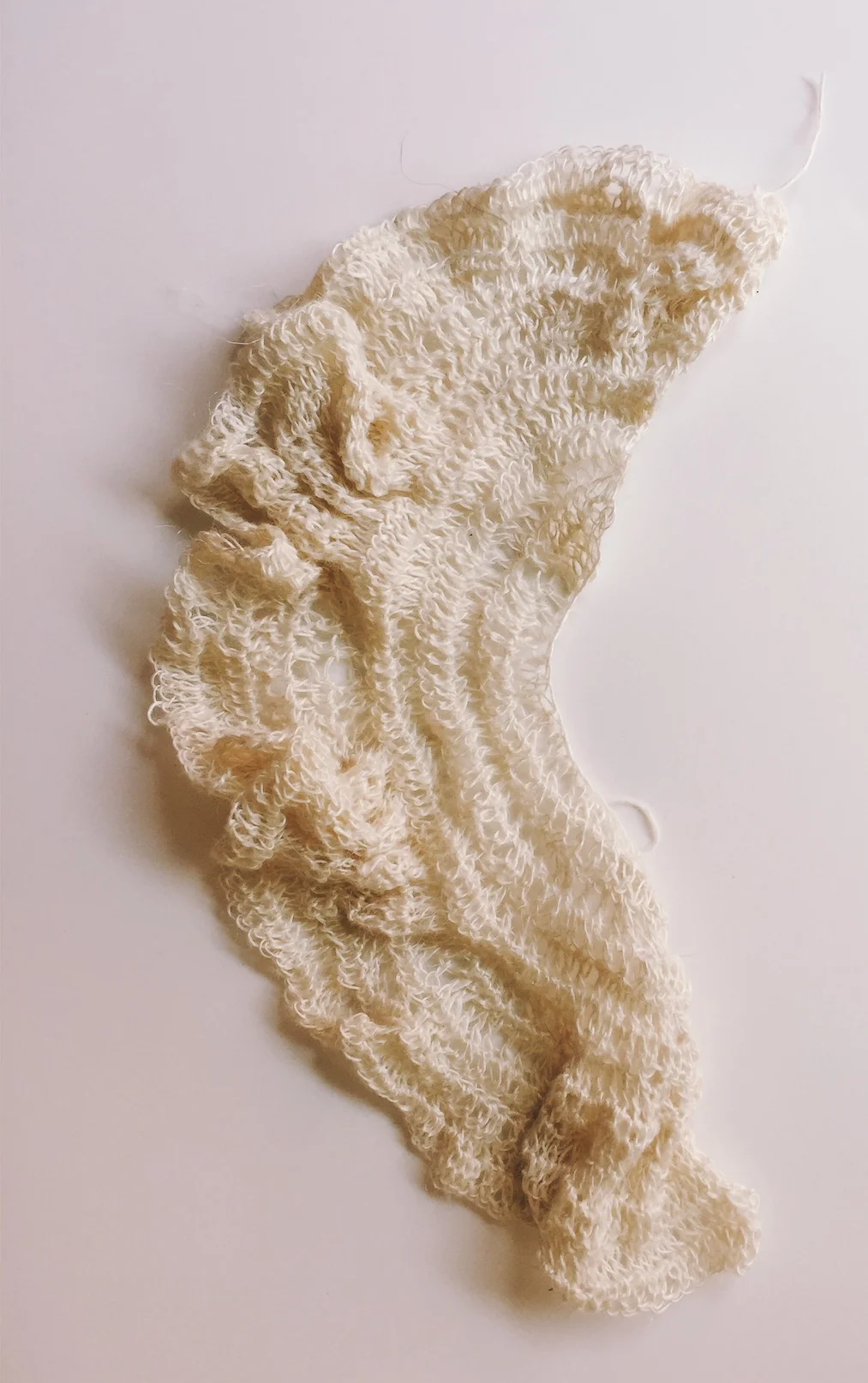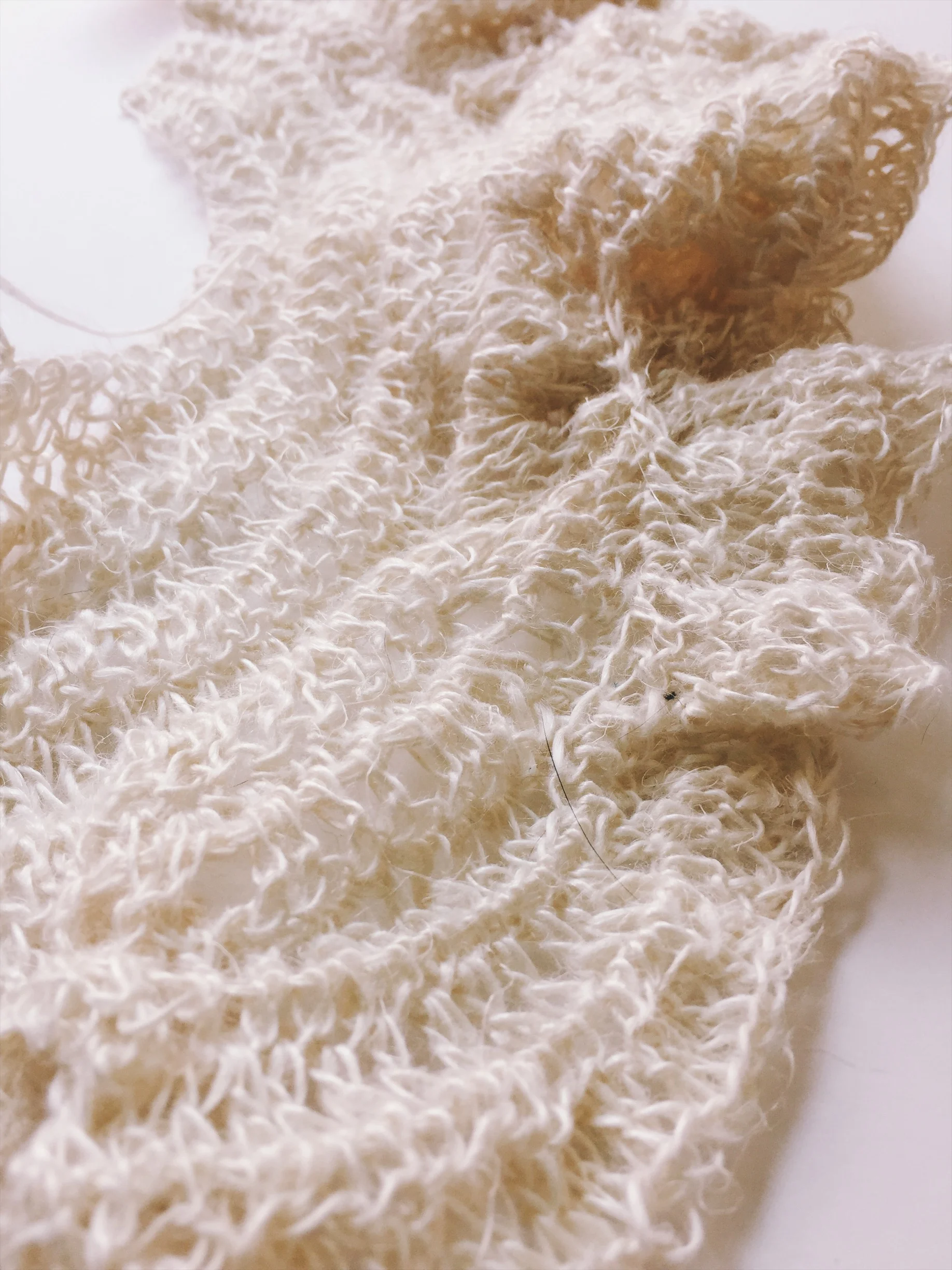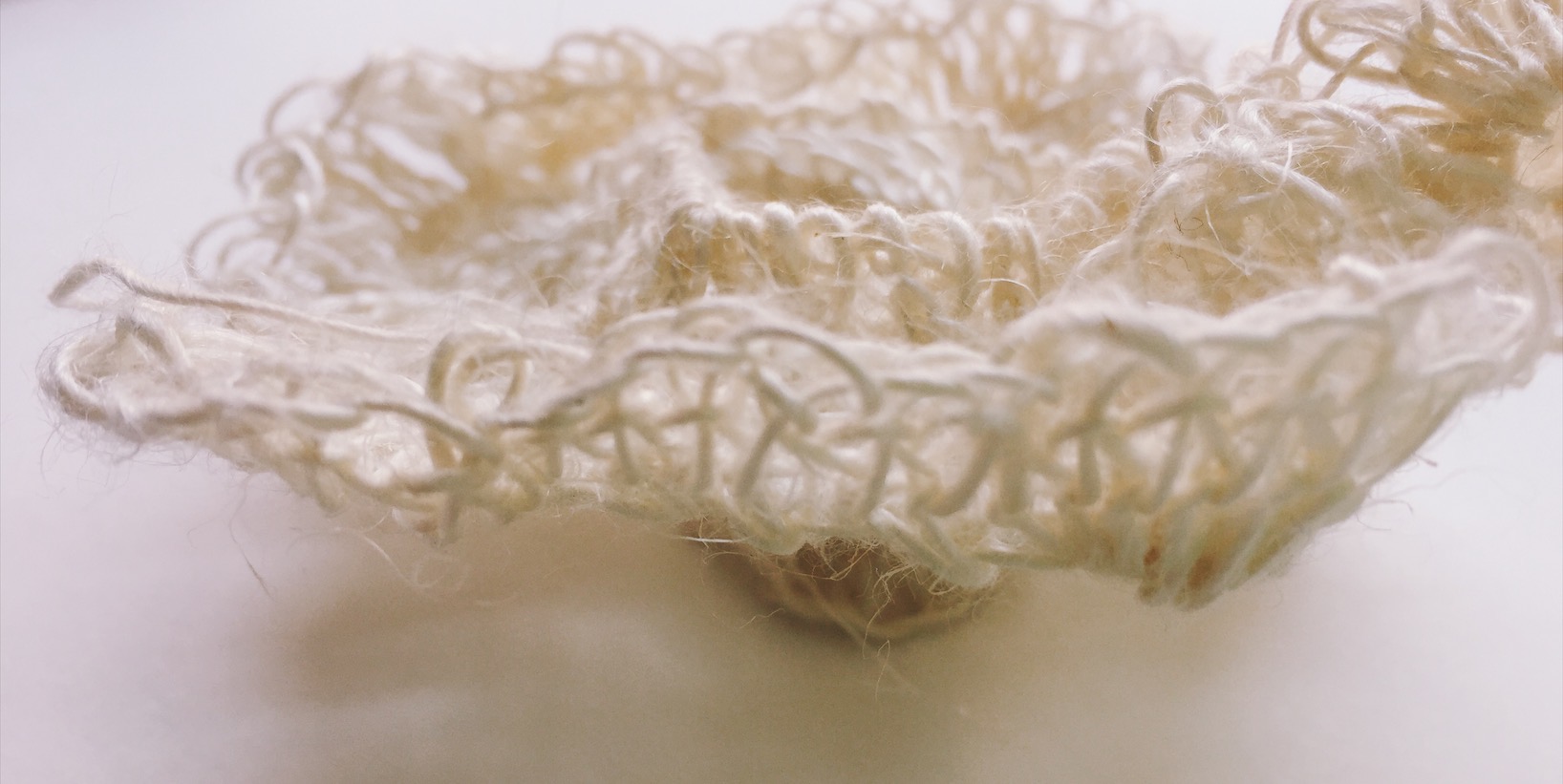
Habu Textile 6/1 Linen Roving Piece
After spending a month working on this 4"x12" piece in my go to ratio of 3:4, eight rows into the work, I was surprised that this yarn was not exhibiting the characteristic twirls that I had created with yarns of a similar weight and body. On the ninth row, I added an algorithm of "self bracing" to the piece--two sections joined at stitches four and eight within the 3:4 ratio. While the length of the braced sections (or nodes) do not contain the 3:4 ratio in patterning, the internodes do. These internodes have a flat patterning where the characteristic wave is confined to the distal edge.

Habu Textile 6/1 Linen Roving Bracing
After spending a month working on this 4"x12" piece in my go to ratio of 3:4, eight rows into the work, I was surprised that this yarn was not exhibiting the characteristic twirls that I had created with yarns of a similar weight and body. On the ninth row, I added an algorithm of "self bracing" to the piece--two sections joined at stitches four and eight within the 3:4 ratio. While the length of the braced sections (or nodes) do not contain the 3:4 ratio in patterning, the internodes do. These internodes have a flat patterning where the characteristic wave is confined to the distal edge.

Close Up of the Internode in Linen Roving.

Close Up of Node in Linen Roving

Bracing in the Pseudosphere
After reading work on surfaces of flattened negative curvature and constant negative curvature (Eugenio Beltrami's Pseudosphere), I decided to apply the bracing structure to work in the round (aka the pseudosphere). With a ratio of 4:5, the negative curvature develops a spiraling pattern.

Self-Bracing in the Pseudosphere with a Tunisian Stitch
Using what is known as the Tunisian Stitch for the base of the circle in the first three rows, it is possible to invert the piece and have it support its own weight. At least, that is to say at this size.

Self-Bracing in the Pseudosphere with a Tunisian Stitch
Viewed from above.

Self-Bracing in the Pseudosphere with a Tunisian Stitch
The form was then inverted. Due to the three rows of Tunisian Stitches, which create the self-bracing structure, the piece is able to support its own weight.
